 Innovation is inherent in surgery, says Thomas Krummel, MD, so for surgeons, the gap in launching an innovation isn’t the invention process but in the commercialization process. “Discovery and emerging technologies have shaped surgical practice from the start,” he said at a lecture at Boston Children’s Hospital this summer titled “Building on Robert E. Gross’s Legacy of Innovation.”
Innovation is inherent in surgery, says Thomas Krummel, MD, so for surgeons, the gap in launching an innovation isn’t the invention process but in the commercialization process. “Discovery and emerging technologies have shaped surgical practice from the start,” he said at a lecture at Boston Children’s Hospital this summer titled “Building on Robert E. Gross’s Legacy of Innovation.”
Krummel, who co-directs the Biodesign Innovation Program at Stanford University and and is Surgeon-in-Chief at the Lucile Packard Children’s Hospital, challenged his audience of residents and surgeons. “A surgeon in an academic department must pull a new rabbit out of his hat” with some frequency, he argued, pointing to historical examples ranging from the pulse oximeter to the more recent development of the video laparoscopic camera.
He also noted the variety of attitudinal approaches that surgeons can take to potential innovations. Some involve fear, and some surgeons try to ignore the potential for change, hoping it will go away. In Krummel’s estimation, “that is not a very surgical approach.” Full story »
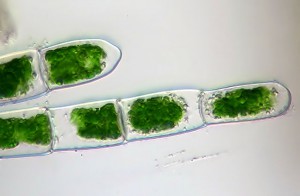
Algae similar to these could be the source of a powerful local anesthetic. (Micropix/Wikimedia Commons)
Two years ago, we told the story of the quest of
Charles Berde, MD, PhD, of Boston Children’s Division of Pain Medicine, to
turn an algal toxin called neosaxitoxin into a long-lasting local anesthetic.
At that time, Berde—together with Alberto Rodríguez-Navarro, MD, from Padre Hurtado Hospital in Santiago, Chile, and a Chilean company called Proteus SA—already knew that neosaxitoxin, a site 1 sodium channel blocker which in nature is produced by algal blooms, could help patients who had undergone laproscopic surgery recover more quickly and experience less pain compared with the current state -of-the-art local anesthetic called bupivacaine.
The group has now taken a big leap forward. In May, they launched a Phase 1 clinical trial at Boston Children’s in healthy male patients, aimed at showing that neosaxitoxin produced by Proteus from bioreactor-grown algae is safe using clinically relevant doses. Full story »
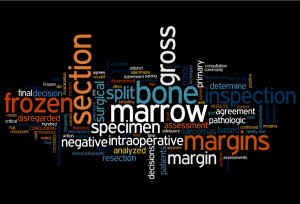
One assessment of tumor margins during bone tumor removal surgery may suffice where two are done now.
Improvements in imaging technologies have made the process of defining the extent of bone tumors like
osteosarcomas increasingly accurate.
But while it’s easier than ever to say, “The tumor starts here and ends here,” when removing a bone tumor surgically, surgeons still need to take a moment during the operation to check the edges (or “margins”) of the removed and remaining bone for any signs of remaining tumor, a step called intraoperative assessment.
“You need to make sure the tumor has been completely removed and a safe amount of normal tissue remains as a buffer,” says Sara Vargas, MD, director of patient safety and quality in Boston Children’s Hospital’s Department of Pathology. “Achieving a margin that is free of tumor reduces a patient’s long-term risk of local tumor recurrence.”
During surgery, there are two ways to do the assessment, each method providing a check on the other: gross split specimen inspection and frozen section inspection.
The two methods, which are often done either simultaneously or in tandem during surgery, are quite different. Full story »
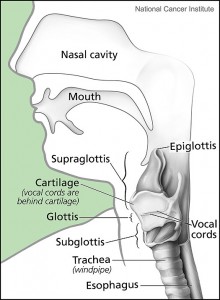
Anesthesiologists have to get by and around a lot of things in order to put a breathing tube into a surgery patient. Kai Matthes thinks that using a pair of endoscopes could make the job easier. (National Cancer Institute)
Intubating the patient is a critical step in any surgery where general anesthesia is being used. But as any anesthesiologist will tell you, intubating a child is very different from an adult, largely because there is less space available in which to maneuver the breathing (aka endotracheal) tube.
There’s also less space in which to see. To place a breathing tube properly and keep the airway open, an anesthesiologist needs to see the patient’s vocal chords and the opening of his or her windpipe. Typically, the doctor uses a laryngoscope to see into the throat, but sometimes tumors, congenital anomalies, inflammation, or other obstructions block the view.
The next tool of choice would be a fiber optic endoscope – essentially a long, thin, tubular video camera – to peer within the throat. Sometimes, however, even the fiber optic scope can’t get a full view, and on occasion the scope and tube can get in each other’s way, making the anesthesiologist’s job harder and the procedure riskier.
But here’s a thought: If one scope can’t do the trick, what about two? Full story »
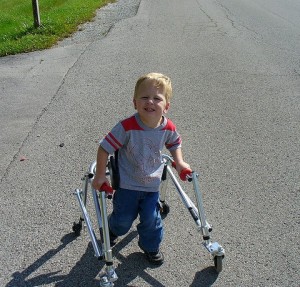
Children with severe cerebral palsy sometimes need surgery to help their hips and spine. But do these operations actually improve quality-of-life? Rachel DiFazio would like to know. (PaulEisenberg/Flickr)
Children with cerebral palsy (CP), the most common form of physical disability in children, all experience at least some difficulties in communication and movement. Those with the most severe forms of CP sometimes undergo reconstructive surgery on their hips and spine to correct dislocations or scoliosis. But do these operations actually improve quality of life?
“I’ve taken care of children with cerebral palsy for 21 years, and I’ve always wondered what the outcomes were of the surgeries,” says Rachel DiFazio, a nurse practitioner with the CP Program at Children’s Hospital Boston. “We have a lot of X-ray data and range-of-motion data, but we don’t really know if it gets any easier to take care of these children, whether life gets a little bit easier after the surgery, and in what ways.” Full story »
 For decades, Chile’s shoreline has had problems with periodic algal blooms – referred to as Red Tide, but actually containing a mix of microorganisms including bluegreen algae. Their toxins accumulate in shellfish, landing seafood consumers in the hospital, partially paralyzed, sometimes needing ventilators to breathe.
For decades, Chile’s shoreline has had problems with periodic algal blooms – referred to as Red Tide, but actually containing a mix of microorganisms including bluegreen algae. Their toxins accumulate in shellfish, landing seafood consumers in the hospital, partially paralyzed, sometimes needing ventilators to breathe.
The nerve block caused by the toxins is reversible, so most people fully recover, but it’s led to repeated bans on shellfish harvest, consumption and sale. Out of public health and economic concerns, Chilean scientists have built up an expertise in monitoring coastal waters and isolating and purifying the toxins.
But some scientists, like Alberto Rodríguez-Navarro, also a physician at Padre Hurtado Hospital in Santiago, saw pharmacologic potential. “We wondered what we could do with these compounds,” he says. Full story »
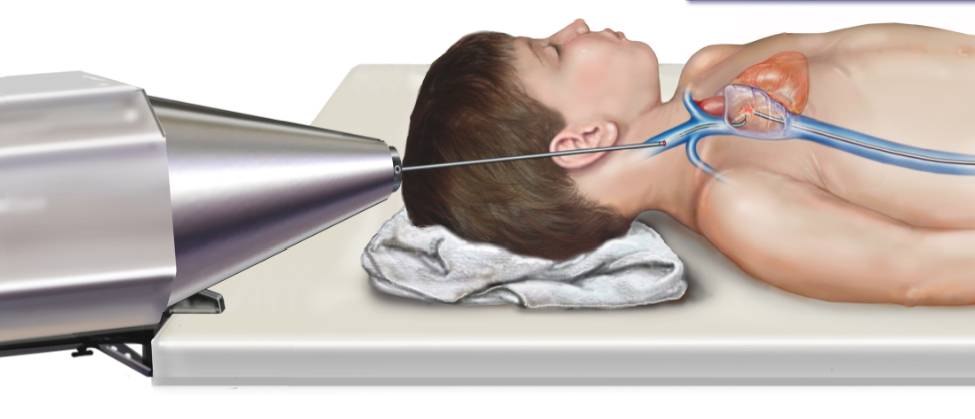
Concept for a new kind of surgical robot (click to enlarge)
Inventors and engineers tend to come up with ideas and technologies first, then say, “This is cool, what’s it good for?” Clinicians tend to say, “Here’s my clinical problem, how can I solve it?”
This was roughly the thinking that brought together Boston University engineer Pierre Dupont and Pedro del Nido, chief of Cardiac Surgery at Children’s Hospital Boston.
Dupont had a vision for a next-generation surgical robot. del Nido had a vision of doing complex cardiac repairs in children while their hearts are still beating. Could they create a viable technology? Full story »
 Innovation is inherent in surgery, says Thomas Krummel, MD, so for surgeons, the gap in launching an innovation isn’t the invention process but in the commercialization process. “Discovery and emerging technologies have shaped surgical practice from the start,” he said at a lecture at Boston Children’s Hospital this summer titled “Building on Robert E. Gross’s Legacy of Innovation.”
Innovation is inherent in surgery, says Thomas Krummel, MD, so for surgeons, the gap in launching an innovation isn’t the invention process but in the commercialization process. “Discovery and emerging technologies have shaped surgical practice from the start,” he said at a lecture at Boston Children’s Hospital this summer titled “Building on Robert E. Gross’s Legacy of Innovation.”













